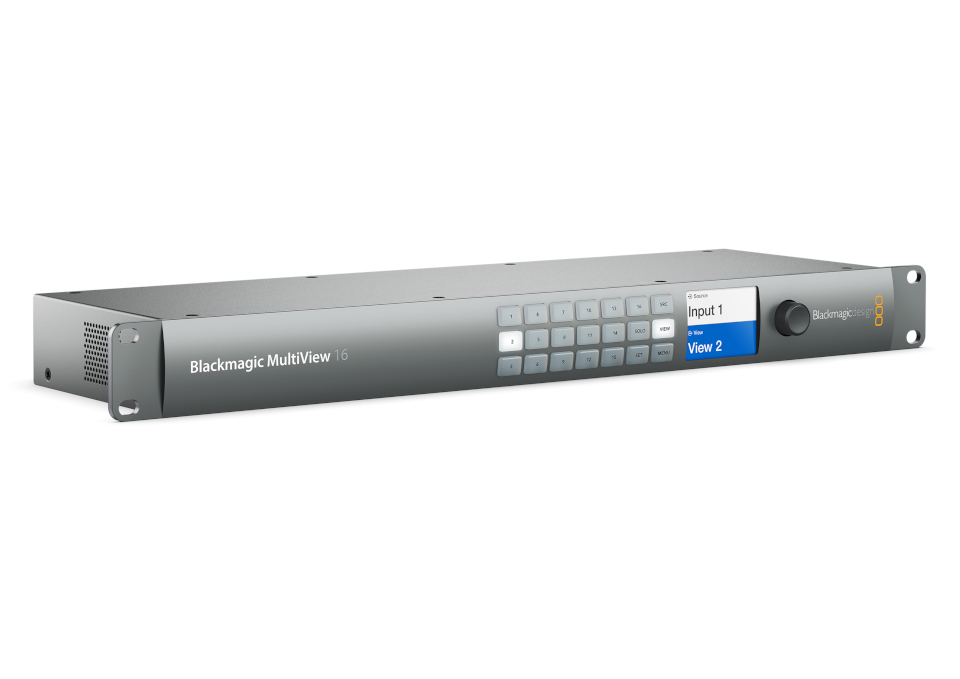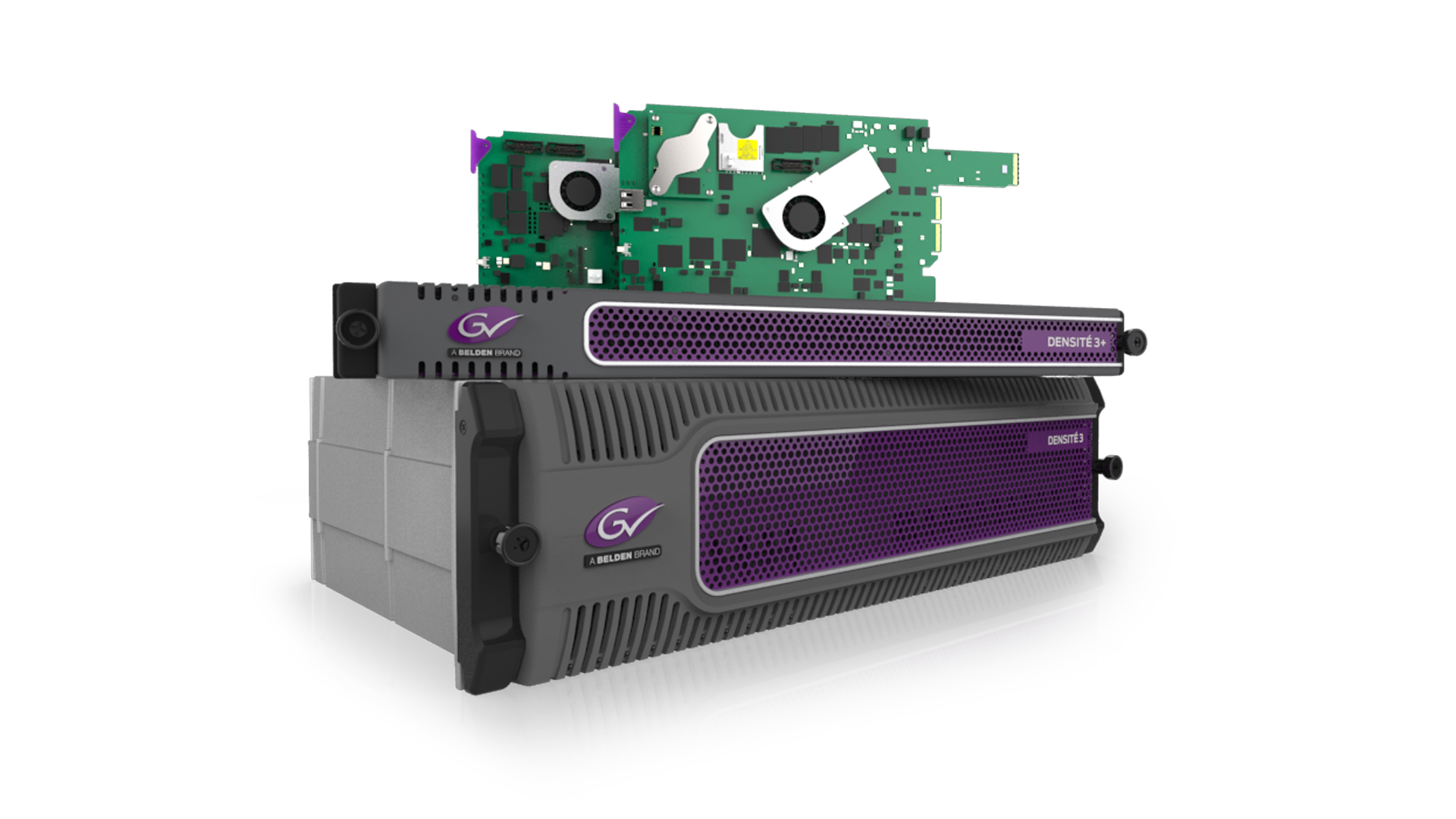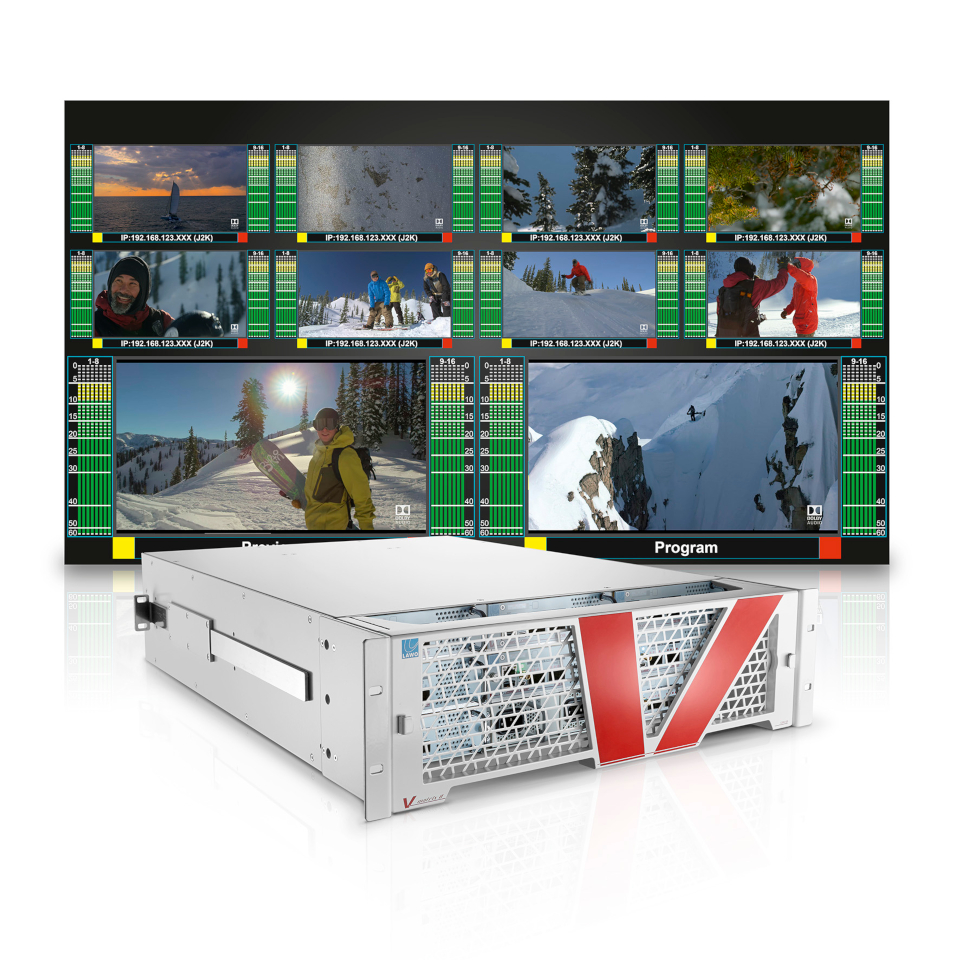Multiviewers Embrace IP Video Networking
ALEXANDRIA, Va. — Rapid-fire changes in the television industry in the past 15 years have made multiviewers an essential component in virtually all studios. Of course, nothing stands still for long, and as workflows, processes and standards change, so too change how multiviewers work.
With the acceptance of IP video and the SMPTE 2110 along with other related standards, multiviewers are now starting to show up with full IP video capability. That said, most facilities today do not have media distribution via SMPTE 2110 networks, so there is still a good market for multiviewers that accept signals the old-fashioned way: SDI and HDMI.
HIGHER RESOLUTIONS
In addition to the new IP video transport standard, there is an increasing need for multiviewers to work with 4K/Ultra HD (3,840 x 2,160-pixel) video.
“Our largest model, the MultiView 16, has 16 independent 6G-SDI inputs so customers can connect any combination of SD, HD or Ultra HD sources and monitor them all simultaneously on a single display,” said Bob Caniglia, director of sales for North America for Blackmagic Design. “It has router-style controls on the front panel, along with the LCD and spin knob, which lets you adjust settings, route sources to different views, add overlays and more. Output can be set to a 2x2, 3x3 or 4x4 grid, and you can solo any source full-screen.”

Blackmagic Design’s MultiView 16 and MultiView 4 (a four-input model) feature remote control via IP using the included Mac and Windows software. MultiView 16 also features remote control via IP using Blackmagic Videohub hardware control panels. In addition, MultiView 4 supports power over Ethernet (PoE+), which can be used to remotely power the device.
[Read: NAB Show Product Review — Signal Processing & Analysis]
Likewise, For-A uses IP control to permit fast reconfiguring of its multiviewers and integration with the company’s switcher line.
“Having the switcher, router and multiviewers in combination allows the operator to maintain consistent source naming and tally information between all subsystems,” said Bob Peterson, product specialist for For-A Corporation of America. “The switcher can also map its program buttons to directly control the router’s crosspoints, which makes configuration of 4K UHD easier. All our multiviewers can tightly integrate with For-A switchers.”
Peterson said that all For-A multiviewers use IP networks as the primary method of layout and control. Some of the company’s multiviewers have hardware control panels, and all For-A multiviewers have web GUIs for basic control functions and can stream screen output and error information over IP for logging purposes.
“The publication of SMPTE ST 2110, as well as ongoing work by industry bodies such as AIMS and AMWA, has now given our customers the confidence to invest in IP solutions.” — Martin Jolicoeur, Grass Valley
FULL-BORE IP VIDEO
Going all-in with IP video is not hard to find among multiviewer manufacturers.
“The publication of SMPTE ST 2110, as well as ongoing work by industry bodies such as AIMS and AMWA, has now given our customers the confidence to invest in IP solutions,” said Martin Jolicoeur, director product line management for Grass Valley. “We are committed to helping our customers make the transition to IP at a pace that suits their business and operational needs, whether that’s getting them IP-ready or going all-IP.”
Jolicoeur said that Grass Valley customers can futureproof while still maintaining their current SDI environment using the company’s Kaleido-Modular-X, which allows them to upgrade to full IP when needed. The addition of an IP input card supports monitoring of SMPTE 2022-6 video-over-IP using dual 10 GigE IP inputs.

Jolicoeur said that the Kaleido IP multiviewer-native IP solution delivers the highest number of simultaneous video and audio decodes in the industry, with an unlimited number of audio decodes (stereo and 5.1) per program. It also supports SMPTE ST 2110 and 2022-6, DVB MPEG TS and OTT monitoring of streaming formats.
Also falling into the full-bore IP video category is the Apantac T-Sharp, which allows IP inputs such as H.264 and ST 2022/2010. The T-Sharp and other Apantac multiviewers can decode incoming streams and display the video signals as part of the multiviewer’s output. Apantac multiviewers support formats from analog video to SD/HD/3G/12G, HDMI, 2022/2010 and H.264 as inputs.
In addition to its broad support of IP video, Apantac’s multiviewers have IP control capability that is manufacturer agnostic.
“Apantac multiviewers allow IP control using not only Apantac’s own software, they also allow all popular control systems such as Crestron and AMX,” said Thomas Tang, president of Apantac in Portland, Ore. “IP control also allows the multiviewer to communicate with third-party products such as production switchers and routers for dynamic names and tallies.”
CLEAN SHEET
If you are a manufacturer and want to create a multiviewer line in 2018, where do you start on your clean-sheet design? In the case of Lawo, you head right for IP.

“As we don’t have any SDI-legacy [multiviewers], our products are developed as true IP-native products,” said Andreas Hilmer, director marketing and communications for the Germany-based company. “Our multiviewers … are true IP multiviewers with 10/40GB network connectivity, plus additional SDI IO if needed, running on Lawo’s V__matrix software-defined processing blades. All our products are based on IP technology using open standards in line with the AIMS roadmap, such as ST2110, SMPTE2022-6/-6 and AES67.”
In conversations with engineers tasked with making IP video work in their facilities, I’ve been told that SDI was still the way to go for maximum reliability and a trouble-free out-of-the-box experience. However, that was before SMPTE 2110 and related standards were finalized. With strong standards supporting IP video, it looks like many manufacturers are getting the product out there, ready for the demand that they expect will follow.
There are many other aspects to multiviewers that need to be researched before you decide to commit to a specific product. IP video is just one of many recent developments to make it all the way through standards creation to manufactured products, giving engineers more flexibility and choice in system design and operations. IP video — as implemented in multiviewers and other products — is now mainstream.
Get the TV Tech Newsletter
The professional video industry's #1 source for news, trends and product and tech information. Sign up below.
Bob Kovacs is the former Technology Editor for TV Tech and editor of Government Video. He is a long-time video engineer and writer, who now works as a video producer for a government agency. In 2020, Kovacs won several awards as the editor and co-producer of the short film "Rendezvous."

